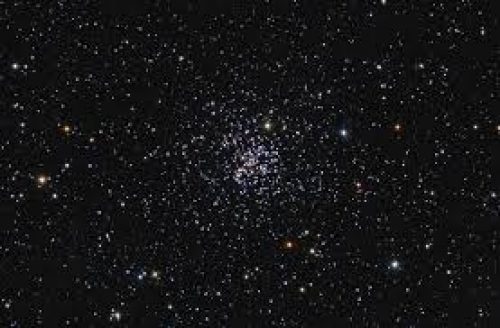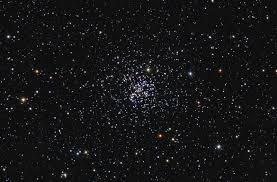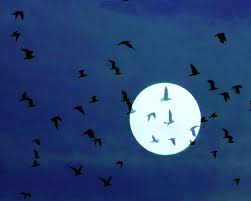As humans we rely on the natural rhythm of light and darkness created by the sun, moon and stars. When our circadian rhythm is disrupted, the consequences for health can be dire. So it is good news that Sussex is now one of ten UK Dark Sky Places for those who or visit this area.
A Dark Sky Place is an area that has been officially recognised for its low levels of light pollution and good public access. Certification is provided by the International Dark Sky Association and follows a lengthy and rigorous application process requiring the ability to demonstrate local authority commitment to lighting policies, public education and community involvement. Dan Oakley, dark skies officer for the park, led the successful bid and tells of three years spent diligently observing the sky in order to develop the necessary maps and documentation required to evidence the quality of the park’s skies. Beginning with a pilot study that led to a piece-by-piece expansion across the entire park, Oakley explains, “We worked with local authorities and street lighting companies, as well as astronomy groups and local enthusiasts to get their involvement and support, also developing planning policies to protect the dark skies in future.”
The rapid development of our towns and cities – with their constant illumination from artificial lighting – has resulted in the worldwide environmental issue of light pollution. Up until the last century our skies were much darker; in any part of the world it would have been possible to enjoy the wonders of a spectacularly starry sky. The increased use of lighting in our streets, homes, and public areas means that future generations may never witness this splendour, as truly starry skies become more of a rarity which makes the case for protecting the dark skies over the South Downs even more compelling.
But why is a dark sky such a good thing?
As humans, we evolved in a rhythm of light and darkness naturally created by the sun, moon and stars. Light sends signals to our brains to coordinate our physiology and behaviours, such as heart-rate, body temperature and alertness, affecting our body clock – the circadian rhythm – to control our sleep/wake cycles. The impact on our health is significant, with many of us already blighted by insomnia, memory problems and a general inability to ‘switch off.’ Research has found that areas with higher levels of light pollution carry a greater long-term risk of serious illnesses including cardiovascular disease, diabetes and even some types of cancer.
And it’s not just us humans who are affected. Charlotte Owen, WildCall officer for Sussex Wildlife Trust, says: “Our wildlife is experiencing problems, particularly those species that are nocturnal specialists. Bats for example may delay emergence from their roost, shortening the amount of time available to forage, meaning they may miss the peak activity of their insect prey. Lighting also impacts on bat feeding and commuting behaviour, with some species avoiding lit areas.
In addition many birds migrate at night. If you go out into the garden especially in the Spring and Autumn you can hear numerous bird calls as they pass over – geese, smaller wading birds, swallows and many more.
Moths and other flying insects are drawn to our lights and many die in the process, directly impacting populations of these insects but also having an impact further up the food chain. Bird behaviour is altered by lighting too – robins often sing at night in well-lit areas.”
Dan and his colleagues are working hard to help preserve our dark skies, also collaborating with local groups and schools to raise awareness and encourage positive lifestyle changes. “We have an education team working with local children, and parents can help to make this second nature whereby we instinctively protect our night skies.” The great news is that unlike other forms of environmental pollution, light pollution is reversible, and so by taking action we will see immediate results. A few simple changes can really help to improve our immediate environment, Dan explains: “The principles that protect the sky are the same, from the smallest ideas through to the biggest schemes. In basic terms, we need to eliminate unnecessary light and this can be as simple as just getting rid of the lighting we don’t need.”
So where are the best stargazing spots in Sussex and what should we look out for?
Dan advises: “The best places are away from the main towns. Areas just north of the ridge of the downs are ideal, as the ridge acts as a natural filter.” We’re also blessed with places we can go to learn from the experts, with venues including the South Downs Planetarium in Chichester, the Observatory Science Centre in Herstmonceux and Winchester Science Centre on our doorsteps.
The Planetarium welcomes more than 16,000 guests each year, ranging from groups of local schoolchildren to stargazing tourists. As well as hosting a series of public events, the venue also trains the Royal Navy in the use of astronomy for navigation. Dr John Mason, principal lecturer at the Planetarium, tells of his love for our dark skies: “I grew up in an area that is now at the southern edge of the South Downs National Park. In those days it was extremely dark there, with the Milky Way a stunning sight, particularly on summer evenings. It is one of the main reasons I became fascinated by astronomy and science at an early age. To me, it is just as important to be able to enjoy a clear, dark, star-studded sky as it is to be able to go on a nice walk in the countryside on a Sunday afternoon.”
We’re in for a treat this summer with regard to the Milky Way. This glorious galaxy is at its most visible in years, peaking between the hours of 10pm and 11pm throughout August. Steve Bassett from Worthing Astronomers says: “The downs offer excellent dark sky sites to view the Milky Way with the naked eye. The area we see best is a particularly bright and dusty region around the constellation of Cygnus.”
Late summer will see the arrival of the Andromeda galaxy, as Steve explains: “This will be rising to the north east towards the end of summer. At 2.5m light years away, this is our closest major galaxy and consists of one trillion stars. It will appear as a small, faint misty patch and though visible to the naked eye, is smaller and harder to spot than the Milky Way”.
With so much to see, summer is the perfect time to get out and stargaze. Let’s all play our part in helping to keep the Sussex skies dark, so they can be enjoyed for generations to come.
What can we do to help?
• Use lighting only where and when needed – do we really need to keep that hallway light on? Can we manage with one lamp in our lounge rather than two? Please, as house guests – think about this when you are outside in the garden at night.
• Choose the right bulb. Check packaging and choose those with a colour temperature below 3,000k. For outdoor lighting, opt for below 500 lumens and install proximity timers so lights are activated only when needed.
• Close curtains and blinds at night to stop light from our homes seeping out and into the dark skies.
• Point lighting to where it is needed – not at the sky!
• Install motion detector lights or timers for external safety lighting.
• Spread the word to family and friends.
Observing the Milky Way
• Advice from Steve Bassett of Worthing Astronomers:
• Safety first! Go with a group, if possible, and always let someone know where you are going and what time to expect you back.
• Go somewhere very dark – the darker the better!
• Give your eyes time to adjust, avoiding bright lights. ‘Dark adaption’ can take about 30 minutes.
• The Milky Way will appear as a band of faint mist – on a very clear night this will cover a long stretch from north to south.
• You may notice it out of the corner of your eye first as our peripheral vision is more effective in detecting faint light than looking directly.
• The best viewing spots are Goring Gap, Nepcote Green and Honeysuckle Lane car park areas around Worthing and Kithurst Hill car park near Pulborough.
• There are many planetarium apps available to show you where to look, and printable star maps can be found on the web.
Further information
• South Downs Planetarium – The Planetarium is always keen to welcome volunteers to help keep it running, as volunteer coordinator Ann Mills explains: “We have a great environment here and our volunteers can really expand their knowledge of astronomy and the night sky. We have about 65 volunteers from a range of backgrounds – engineers and students, for example. We’d love to hear from those able to spare a few hours each week to work with our visitors and help with administration. No previous experience is required, just a keen interest in astronomy and a willingness to get involved.”
• Worthing Astronomers – A free to join astronomical group based in and around the Worthing area. The group likes to get out under dark skies as a group whenever the weather permits. Its popular free public events on Worthing seafront run throughout the year.
• Observatory Science Centre, Herstmonceux
So what are you waiting for? One of the complete joys of living in the countryside is we have very little light pollution – so bring a rug, your binoculars and gaze up to the Heavens and watch the stars and shooting stars overhead – right here at Chichester Self Catering!!
You won’t regret it.
© Chichester Self Catering 2017
If you liked this post you may also enjoy:


